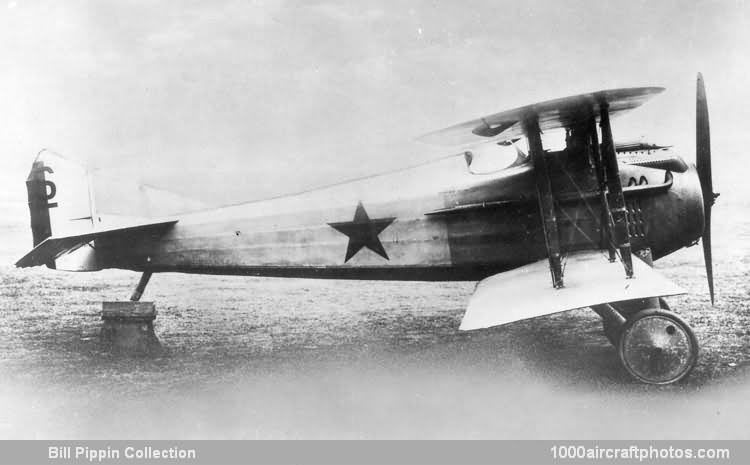Evolved by Louis Béchereau virtually in parallel with the unorthodox Type G (SG.1) was the relatively conventional Type H which retained the characteristic interplane bracing of preceding SPAD fighters and was of similar construction. Powered by the new 150 hp liquid-cooled Hispano-Suiza 8Aa eight-cylinder V-engine, the prototype, referred to contemporaneously as the SH.1, was flown in April 1916.
Trials indicated that the SH.1 offered a pronounced advance on existing fighter equipment and SPAD received a contract on May 10 for 268 aircraft under the official designation Spa. VII C1 (monoplace de chasse). The derivation of this designation is obscure, but SPAD's series of letter designations in alphabetical sequence appears to have been discarded in favor of a system more or less conforming with the designation assigned by the SFA (Service des Fabrications de l'Aviation). Consequently, the production version of the Type H was given the company designation S.VII.
A sturdy aircraft possessing great structural strength and fine handling qualities, the S.VII closely resembled the SH.1. It retained the circular frontal radiator, but dispensed with the large spinner with frontal opening, and wing area was increased by 19.90 sq.ft (1.85 sq.m). Armament comprised a single 0.303 in (7.7 mm) Vickers gun with Birkigt synchronization mechanism. Initial delivery tempo was slow; by February 25, 1917, only 268 S. VIIs had been delivered to the Aviation Militaire plus 39 to the RFC.
The S.VII was initially referred to as the mitrailleuse volante (flying machine gun) of Georges Guynemer (France's leading ace), but by December 1916, he had told Béchereau that "the 150 hp SPAD is no match for the Halberstadt ... it [the Halberstadt] climbs better and, consequently, has an overall advantage". One consequence was the introduction of the 180 hp Hispano-Suiza 8Ab engine in S.VIIs from the spring of 1917.
Apart from production by the parent company, the S.VII was to be built in France by the Société SPAD et Janoir, Blériot Aéronautique, Kellner, Regy, Gremont, SEA and De Marçay, some 5,500 being produced. In addition, 120 were built in the UK by Mann Egerton and 100 by L Blériot (Aeronautics) for the RFC, and in Russia slightly more than 100 had been built by Dux when lack of engines terminated production.
Most French escadrilles de chasse flew the S.VII at one time or another, and, in addition to its use in the UK and Russia, it was operated by Belgium, Italy and the USA. After WW I, S.VIIs served with Brazil, Czechoslovakia, Estonia, Finland, Greece, Peru, Poland, Portugal, Romania, Siam (now Thailand) and Yugoslavia."
The following data relate to the 180 hp S.VII.
